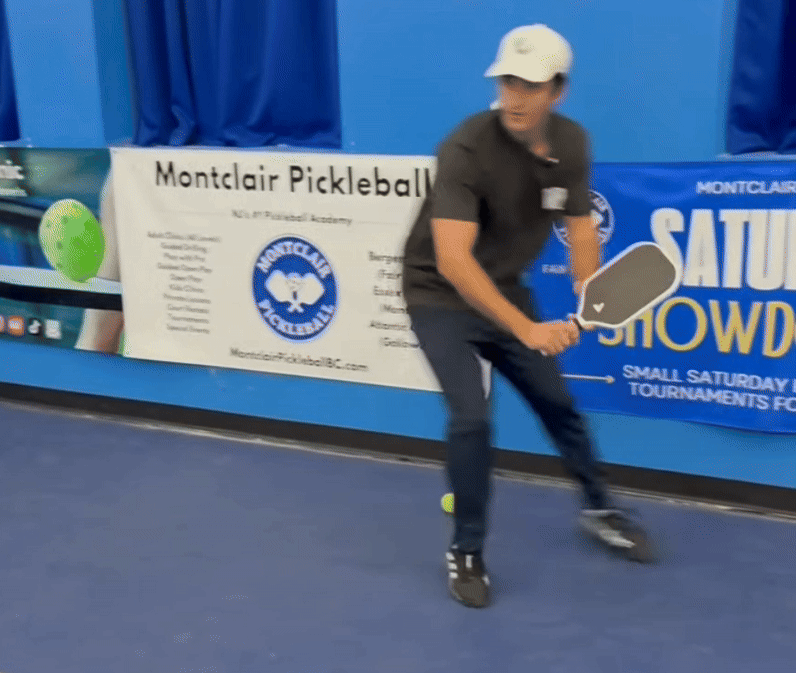- The Pickleball Clinic
- Posts
- No, The Slice Return is not Extinct
No, The Slice Return is not Extinct
As any sport evolves, the dominant style of play changes, and certain shots and strategies that were once effective go by the wayside.Pickleball is no different. Over the past couple of years, the game has evolved dramatically—drops have given way to drives, and dinks have given way to speedups. One shot that is now being touted as ineffective by some pros and coaches is the slice return. But today, we’re here to show you why that is not necessarily the case, and you should still be using the slice return. Let’s dive in 👇

Welcome to The Pickleball Clinic Coaching Newsletter!
As any sport evolves, the dominant style of play changes, and certain shots and strategies that were once effective go by the wayside.
Pickleball is no different. Over the past couple of years, the game has evolved dramatically—drops have given way to drives, and dinks have given way to speedups.
One shot that is now being touted as ineffective by some pros and coaches is the slice return.
But today, we’re here to show you why that is not necessarily the case, and you should still be using the slice return.
Let’s dive in 👇

When someone asks me “Should I be slicing my returns?” my answer is always “It depends.” The slice used to be the preferred way of returning serve for pros.
Backspin makes the ball hang in the air for longer and bounce lower compared to flat or topspin shots. The benefit this creates is that a well-hit return will give you more time to get to the kitchen line, and force your opponent to bend lower, which traditionally makes offensive drives harder to hit. Once upon a time, some pro players sliced almost all of their returns.
In the modern game, the pros barely slice their returns. Why is that?
Well, backspin from the returner’s perspective is topspin from the server’s perspective. I.e. the serving team can generate more topspin on a third shot off of a slice return compared to a flat or topspin return. That’s good news if you love hitting third shot drives—the additional topspin means that you can hit harder and still keep the ball in, and/or you can get the ball to dip far below the net by the time your opponent contacts it.

So, to answer my question above in more detail, whether you should slice your returns or not has a lot to do with how comfortable your opponents are with hitting topspin drives. If your opponents have good topspin drives, you should avoid slicing to them. If not, the slice return is a terrific option.
Tons of amateurs, and even some pros, do not have strong topspin drives. You should always test your opponents in the beginning of a game by slicing a return and seeing how they respond. If they don’t rip it back at you, slice away! A good slice return is very difficult to drop—the backspin makes the ball die off the paddle.
Here are some key tips to keep in mind so that you can reap the benefits of the slice return. Tips 1 and 2 can be applied to both the forehand and the backhand, and tip 3 is just for the backhand.
Backspin is created from swinging high to low. In order to slice the ball, you need to start on top of the ball, and swing down and through.
Swing from the shoulder—your wrist and elbow should be locked. Your shoulder creates most of the swing path on the backhand slice. If you “chop” your elbow at the ball, or break your wrist through the shot, you’ll lose all control. A super common misconception is that a chopping motion with your elbow will create spin, but to maintain control you need to swing through with the shoulder, and keep the elbow still.
Split your arms at the finish on your backhand. You should follow through with your non-dominant arm fully extended. This will keep you balanced through the shot. If you don’t split your arms at the finish, you might open up too quickly and lose control of the shot.
See you on the courts!
- Matt Slowinski (Co-Founder, Pro Player & Coach)


Take a look at the video below for a sweet backhand slice return from the player in the back left.
Notice how he swings from high to low to create the spin, and splits his arms at the end to stay balanced through the shot, allowing him to get up to the kitchen in time.

The Ones You Want to Keep
Your eyes are really important. They may be small, but you need them to see and therefore move, let alone play a sport. So it might just be a good idea to protect them. 👀
It actually reminds us of the story about a guy who asks his dentist if he really needs to brush his teeth. And the dentist answers, "No. You only need to brush the ones you want to keep." So along those lines, only protect the eyes you want to keep. 😀 Assuming you want to keep both of your eyes, we highly recommend BLUE CUT's protective glasses.
With a durable elastic frame, clear or prescription lenses, and an anti-fog coating spray, it's really a no-brainer. Plus, if you visit the BLUE CUT site, they’ll send you a code to take 20% off.


Insights from Pickleball Pro, Coach, and Creator Tanner Tomassi
The slice return is such an effective way to confuse your opponents if they struggle with spin. I like to start my matches off with a slice return, to see if they can handle it, if they can’t, I will capitalize on this the entire match! There are three keys to hit a successful slice:
You should be turned completely sideways and stepping into the shot with your lead foot and front shoulder.
You should be thinking ‘slicing through,’ as opposed to chop. Many players chop, that’s the biggest mistake.
Don’t overhit it! Many players swing full speed, which often causes them to lose control. Stay with a smooth slice and it will give your opponents tons of trouble!


The return of serve is one of the easiest shots to drill. You don’t need anything fancy, all you need is a partner to hit serves at you. Here’s an easy routine that will help you work on your return of serve:
You and your partner will each be standing behind the baseline, cross court from each other (serving and returning positions).
On the server’s side, set up a line about 5 feet inside the baseline. You can set it up with tape, cones, or whatever other objects that you have access to.
Ask your partner to serve at you, isolating forehands and backhands, one at a time. Your goal is to return the ball so that it bounces beyond the line that you set up.
Remember to run towards the kitchen behind your return, even though this is just a drill. Stationary returns are way different from returns that you’re running behind. Drilling your returns without running in won’t help you nearly as much.
After you hit a bunch of forehands, ask your partner to start serving to your backhand. Then ask him to mix it up. After you’ve gotten your forehand and backhand reps in, switch halves of the court and repeat from the other side.
Lastly, you can check out our quick video on the backhand slice return here!


Well, that’s a wrap… so let’s recap what we learned this week about slice returns.
Slice returns are most effective against players who don’t like to hit topspin drives
Test your opponents in the beginning of the match to figure out whether or not they feel comfortable with slices
Swing from high to low
Swing with your shoulder, keeping your elbow and wrist still
Thanks for reading! We hope you can put these tips to good use the next time you’re out on the courts!
Reply to this email with anything you want to see in our future newsletters 😄
- Your Friends at The Pickleball Clinic

